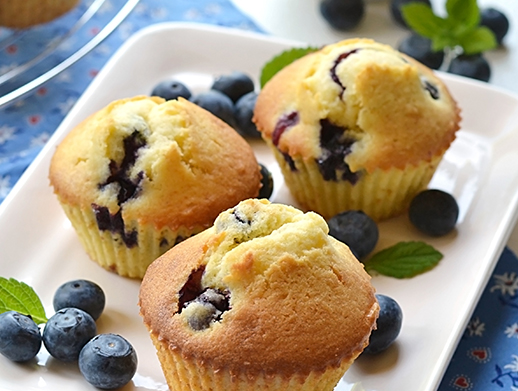Bakery & Desserts
Enhanced Volume. Improved Porosity. Intensified Flavor. Baking is chemistry. For large scale production of trending baked goods such as muffins, doughnuts, and artisan breads, including ciabatta, rye, baguettes, and sourdough, only the most consistent ingredients will perform.
From authentic breads to indulgent fruit-topped tarts, malic and fumaric acids help bakers and pastry chefs deliver the textural experience and flavor profiles that make their products stand out on the shelf.

Learn about our proprietary bakery ingredients:


Applications
Breads
Tight control over the yeast fermentation is crucial as even a slight deviation in acidity can dramatically affect key phenomena, such as dough development and proofing, changing the character and eating experience of the finished product.
Bartek understands that this precise acidity control, as measured by pH, is paramount. Therefore, we supply the highest quality fumaric acid to offer a real solution to bakers and chefs. Due to its unique properties, as baking temperatures rise, fumaric acid becomes more soluble creating a timed-release effect which allows for greater precision and control over rising time and finished product internal structure.
Bartek’s fumaric acid-based systems can make some yeast-raised products, such as English muffins and artisan breads, airier and more porous, easing their adoption at an industrial scale and their consumer appeal. Moreover, they improve the machinability of doughs making them softer and easier to knead and allowing for reduction in water absorption or mix time. This improves the costs and efficiency of the baking operation. All of this is achieved using clean label ingredients to ensure attractiveness to the market.
Bartek’s solutions can also help in product shelf life extension. Our formulated systems allow for product and process optimization through calcium propionate reduction. Improved product attributes, including increased volume, softer texture and extended shelf life, bolster overall desirability. At the same time, mix time reduction and increased water absorption improves efficiencies, increases yields, and reduces cost. The above is achieved using only clean label ingredients, combined with less Calcium Propionate, for added product appeal.
Possibilities Include:
- Artisan breads
- Pan breads
- Split-top breads
- Flatbreads and pizza doughs
Applications
Sweet Baked Goods
For commercial scale bakeries making chemically leavened sweet baked goods, fumaric acid provides functional benefits as a delayed action leavening acid and acidulant. Even a slight deviation in acidity from a formulation’s specifications can dramatically affect key phenomena, such as the onset of leavening, changing the character and eating experience of the finished product. Due to its unique properties, in most of these baked good formulations, the leavening properties of fumaric acid become active during production with minimal impact on taste. Moreover, at levels above pH 4.5, the sourness of fumaric acid is greatly diminished. This makes it ideal for lowering pH in these baking applications.
Possibilities Include:
- Gluten-free applications
- Muffins and cake doughnuts


Applications
Cereals
For breakfast cereals, lasting fruit flavor is difficult to achieve. On first bite, there may be an initial burst of lemon, orange, or grape, but within seconds the cereal’s fruity character is lost.
Luckily, formulating with malic acid can extend the experience of fruit flavors in cereals. Malic acid allows for a prolonged release of flavor compounds, thus making a lasting and stronger fruit flavor. In addition, with a solubility comparable to citric and tartaric acids, malic acid dissolves the moment cold milk hits the bowl. The lingering acidity of malic acid creates a smoother and more satisfying fruit flavor profile.
Applications
Fortified Meals
Many fortified foods and meal replacement formulations contain ingredients with strong and potentially off-putting flavors. Introducing even a small amount of malic acid to a formulation can help mask the taste of functional ingredients. For instance, legume-based proteins such as soybeans and peanuts, as well as high-intensity sweeteners, such as allulose or stevia, can impart distinctive off-tastes that can overpower an application’s flavor profile.
Bartek has decades of experience in modulating flavor systems including the masking strong flavors. Our team works with formulators around the world to fine tune the large-scale commercial production of foods and beverages. Regardless of the application or delivery method, Bartek helps companies manage the consumer’s experience of fortified foods.


Applications
Fruit-filled Bars
A touch of acidity enlivens fruit bar fillings by intensifying and extending the experience of flavor. Most fruits take on different sweet and sour characteristics depending on the varietal and stage of ripeness. The smooth and lingering tartness of malic acid, as well as the long-lasting sourness of fumaric acid, seamlessly complements the natural sweetness and acidity of fruits. By formulating with malic and fumaric acids, one can introduce a persistent layer of sourness to fruit bars that perks up the sweet, fruity character of the application.
Possibilities Include:
- Fig bars
- Fruit fillings
- Fruit drizzle
Applications
Pastries
Improving the flavor experience of a filled pastry can be as simple as changing the pH of its filling, coating, or drizzle. Most pectin-based fruit fillings have a pH around 3.2. At this level of acidity, malic acid provides greater buffering capacity than other acidulants commonly used in most fruit fillings. By stabilizing the pH of fruit fillings, the texture and flavor notes are optimized.
Malic acid can also be used in the end stages of production to suppress sucrose inversion and acid hydrolysis of gelling agents. This process helps to ensure applications maintain taste and texture on the shelf. Furthermore, malic acid delivers more sourness per gram than other acidulants making it an economical choice for attenuating the pH of pastry fillings. As such, malic acid also works well in coatings and drizzles for pastry applications. Bartek has different grades of malic acid to fit the specifications of any application. A team of experts is on-hand to perfect pastry filling formulations and answer questions on usage.
Possibilities Include:
- Fruit-filled cookies, pastries, and bars
- Breakfast pastries
- Danishes
- Coated pastries


Applications
Tortillas
Manufacturers can utilize fumaric acid in flour tortilla formulations to realize significant cost savings and efficiency improvements. Due to its unique solubility profile, fumaric acid can very precisely lower the pH in tortilla formulations during the process, which, in turn, allows for a better balance of ingredient reactions , including the leavening system, gluten and starch, that results in high quality finished products in both industrial and commercial kitchen operations.
Bartek understands that less is more when it comes to acid utilization. At pH 5.5, fumaric acid is stronger than other acids, meaning that it requires significantly less to be used in formulations. Furthermore, fumaric acid acts as a leavening acid. When mixed with sodium bicarbonate in dry mixes, it can reduce or eliminate the need for costly baking powder in corn and wheat tortillas. In addition, because fumaric acid is non-hygroscopic, it eliminates caking in acidulants making them more cost-effective to store and handle.
Possibilities Include:
- Corn tortillas
- Wheat tortillas
- Dry mixes